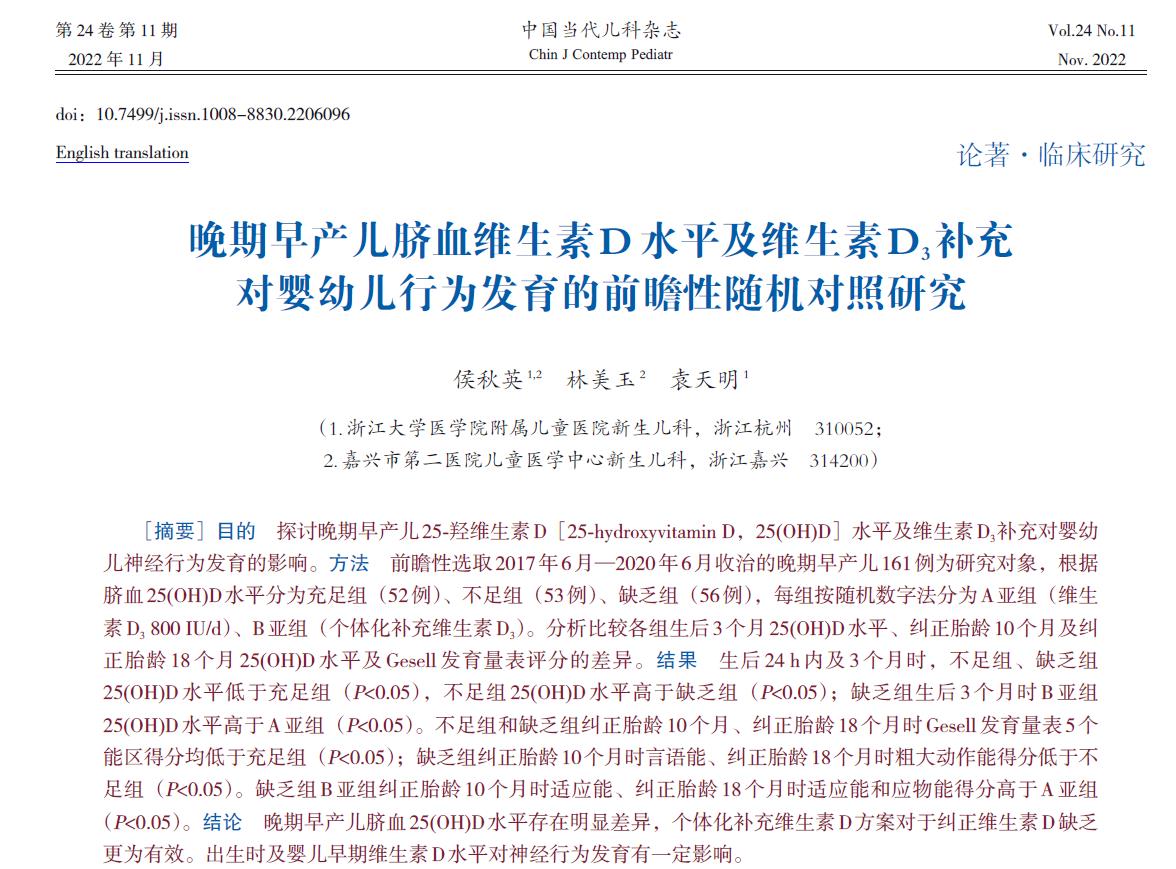 PDF(526 KB)
PDF(526 KB)


Vitamin D level in umbilical cord blood of late preterm infants and the effect of vitamin D3 supplementation on the behavioral development of infants and young children: a prospective randomized controlled study
HOU Qiu-Ying, LIN Mei-Yu, YUAN Tian-Ming
Chinese Journal of Contemporary Pediatrics ›› 2022, Vol. 24 ›› Issue (11) : 1189-1194.
 PDF(526 KB)
PDF(526 KB)
 PDF(526 KB)
PDF(526 KB)
Vitamin D level in umbilical cord blood of late preterm infants and the effect of vitamin D3 supplementation on the behavioral development of infants and young children: a prospective randomized controlled study

25-Hydroxyvitamin D / Gesell Developmental Scale / Behavioral development / Late preterm infant